Silent Screen Swashbucklers, Part 2 of 2: Black Pirates and Beloved Rogues
Douglas Fairbanks, The Black Pirate (1926)
[Check out Part I of Silent Screen Swashbucklers here.]
In the second half of the 1920s, swashbuckler films only got grander and more epic. If you can’t give an audience sound, you might as well give them spectacle, and that’s what filmmakers in America and Europe set out to do. But the industry’s collective skills of cinematic storytelling were also getting more sophisticated, and with more tools at their disposal, filmmakers were able to add more variety and nuance into their moving pictures. And the acting just plain got better. I am frankly amazed that some of these excellent films aren’t better known. I think you’ll find that some of these gems are well worth the trouble it takes to track them down.
[Click the images for bigger versions.]
1925
Cyrano de Bergerac
Rating: ***
Origin: France
Director: Augusto Genina
Source: Image Entertainment DVD
Augusto Genina’s Cyrano de Bergerac, based on Edmond Rostand’s 1897 play, was actually shot in 1922, but it took three years to hand-color every frame of the movie using a painstaking process called “Stencil Color.” Dubbing prints of the result proved to be very expensive, so few copies were made, and it’s a wonder the film has survived. For all that effort to give the film color, the results are strange — unconvincing, garish, and unevenly applied.
But is the movie any good? Adapting a beloved play known for its language to a silent medium was a major challenge, and you have to give Genina credit for trying. For one thing, he uses a lot of close-ups, relying on his actors’ very expressive features to convey the story. For another, he just plain slaps more words up on the screen than is typical of most silents, sometime three cue cards’ worth in immediate succession.
And during Cyrano’s big duel in the theater, in place of cue cards, the words are printed right over the images as surtitles, so the action doesn’t have to cut away. Unfortunately, this is more jarring than effective. And all these expedients don’t quite add up to success — the play is still a talk-fest, and watching a silent talk-fest is a strain.
That said, shooting the film in the actual older streets of Paris gives it a richness of setting no Hollywood backlot could match, and the costumes are uniformly excellent. Pierre Magnier, who plays Cyrano, is inspired, and the film overflows with character actors who mug up a storm. The swordplay, alas, is mediocre stage-combat, but the classic story is as good as ever, the soldiers’ camp at the Siege of Arras is convincingly depicted, and Linda Moglie is one of the best Roxanes I’ve ever seen, radiating intelligence, spirit, and wit, as that character should. Unfortunately, the lugubrious last act is way too long, and the ending is sentimental sludge. All in all, a thoroughly mixed bag.
Don Q, Son of Zorro
Rating: ****
Origin: USA
Director: Donald Crisp
Source: Kino Video DVD
Douglas Fairbanks returns to the well in Don Q, Son of Zorro, once more donning the mask and cape that made him a superstar in The Mark of Zorro. This time around Fairbanks plays both the aging Don Diego de Vega — Zorro — and his son, Cesar de Vega, in a story adapted from a non-Zorro novel, Don Q’s Love Story. Returned from California to Spain, young Cesar astounds his high-society friends with his tricks with an American bullwhip. (Fairbanks trained with the whip for six weeks to get it right.) Shenanigans with the whip get him into trouble with the queen’s guards, and in no time he’s using it in signature Fairbanks style to hogtie sergeants, swing from balconies, and lasso a bull that broke out from the corrida.
But then, escaping the guards through a noble’s garden, he meets the luminous Dolores de Muro, played by Mary Astor. You know Astor as the femme fatale Brigid O’Shaughnessy in John Huston’s version of The Maltese Falcon, but fifteen years earlier she was a silent movie star, a dewy ingénue with a languishing look. Cesar falls in love with Dolores at first sight—but so does the pursuing guard captain, Don Sebastian, and soon he and Cesar are rivals for Dolores’s affection. Sebastian is a dastard, however, who stoops to foul play.
After the colossal epics painted on broad canvasses in Robin Hood and Thief of Bagdad, it must have been a relief to return to the drawing rooms and cabarets of a romantic melodrama, and indeed, the ever-charismatic Fairbanks seems relaxed and comfortable in this film, happy to be doing what he did best. He dances flamenco with a Gypsy, brawls with a gang of back-alley goons, and cuts out his rival at the archduke’s ball.
When Cesar is framed by Sebastian for the murder of the archduke, things get serious. He fakes his own death in a trick worthy of his father, and then it’s outlaw time until he can clear his name. It takes both clever chicanery and dashing sword (and whip) play, but virtue wins out in the end, as the son of Zorro proves himself the equal of his father. The exciting finale, with its call-backs to the first film, is genuinely satisfying.
1926
Bardelys the Magnificent
Rating: ***
Origin: USA
Director: King Vidor
Source: Flicker Alley DVD
Here is another adaptation of an early novel by Rafael Sabatini, a book revived like The Sea Hawk in the wake of the worldwide success of Scaramouche. Its star, matinee idol John Gilbert, was riding high at the time, and was paired here with the hit-making director King Vidor, best known for The Big Parade and (much later) Duel in the Sun. The setting is France in 1632, midway through the reign of King Louis XIII, who is putting down the last major revolt of rebel Prince Gaston. Gilbert plays the Marquis de Bardelys, an elegant Paris playboy who excels at romantic conquest, his seductions fueling the gossip and petty scandals of the French Court.
Bardelys is one of King Louis’s spoiled favorites, and rivals with another favorite, the supercilious Comte de Chatellerault (in a delicious mustache-twirling performance by Roy D’Arcy). When Chatellerault tries and fails to win the hand of a provincial heiress, Bardelys mocks him, and is then maneuvered into accepting a challenge to win her himself—much to the displeasure of the king, played with epicene preciosity by Arthur Lubin. Against the royal wishes, Bardelys sets off into rebellion-torn Languedoc to win the hand of Roxalanne de Lavedan, whom he’s never even met.
Complications ensue, and after a couple of far-fetched coincidences, Bardelys ends up recovering from wounds in the Château de Lavedan, but under an assumed name, that of a slain rebel and traitor. Once he meets Roxalanne, Bardelys finds himself in true love for the first time, but faced with wooing Mademoiselle de Lavedan under a false name while being hunted by royal troops. There follows a tangle of honor and dishonor, spies, jealous rivals, secret vows, betrayals, athletic escapes, and a fine climactic duel.
John Gilbert is genuinely charming and charismatic as Bardelys, and fortunately the smart and spirited Joan Boardman is cast opposite him as Roxalanne. They play well off each other, and their scenes together are the best in the film, especially the famous episode in which Gilbert woos her in a sun-dappled boat drifting through a long screen of trailing willow branches. Sadly, everyone else in the picture hams it up outrageously, which I guess we have to blame on King Vidor’s direction. One caveat: this film was thought lost for decades, until a single copy was discovered in Paris in 2006. It’s been magnificently restored except for several scenes in the middle of the film that had to be reconstructed from stills and the shooting script. That, and the fact that almost everything in this movie is strictly to formula, is what keeps it from being a four-star film. Lurid visual bonus: skull-faced priests with sinister pointy-cowled monkshood minions!
The Black Pirate
Rating: *****
Origin: USA
Director: Albert Parker
Source: Kino Video DVD
The Black Pirate was a risky experiment with a new technology that went by the name of “Technicolor” — a risk that, in the main, paid off. It was also the first big-budget Caribbean pirate movie, and Douglas Fairbanks went all-in on an original story that drew heavily on Howard Pyle’s tales, drawings, and paintings, and on Stevenson’s Treasure Island — the best possible sources, really.
The film opens with a pirate crew plundering a captured merchantman, and immediately establishes that these sea rovers are bad, bad people, as atrocities are committed in the name of plunder and sheer bloody cruelty. The pillaged ship is sunk, its powder magazine exploded, after which Fairbanks, the sole survivor, makes it ashore to a desert island, where he vows to live for revenge.
This is the film that established the visual look of all Hollywood pirate films to follow — right up to the current day, really. Waistcoats and sashes, peglegs and parrots, eye-patches and cutlasses, tattoos, piercings, and questionable facial hair — it’s all here. And then there are the familiar tropes: treasure buried in hidden caves, dividing the spoils on the quarterdeck, drunken roistering, walking the plank — look no further for their cinematic origins.
Posing as a cutthroat, Fairbanks boldly makes a bid to join the band of buccaneers, as they are conveniently burying their treasure on the island where he was marooned. He beats their best fighter in a fencing match—some nice sword-fighting, with some fine rapier-and-dagger work — and joins the crew. Challenged by a Basil Rathbone-cognate to show he understands that there’s more to piracy than swordplay, Fairbanks proves he has brains as well as brawn by taking a merchant ship by stratagem.
The stunts in this film are amazing, as Fairbanks swings through the rigging like Spider-Man. This is the movie where the riding-your-dagger-as-it-slices-its-way-down-the-sail gag was invented — it’s such a great stunt, he does it three times.
Clad all in black silks and leather, Fairbanks takes the name “the Black Pirate,” and sets out to become the pirates’ leader — and then immediately betray them. There’s a captive princess to rescue into the bargain, with whom he’s fallen in love at first sight. But his plans are foiled by a clever rival, and there follows a series of sudden reversals, clever ruses, daring escapes, and unexpected twists. Most unexpected of all, for Your Editor at least, is when Fairbanks, having escaped from the pirates, returns to rescue the princess in command of a long, slim galley rowed by three dozen body-builders clad mainly in shiny leather straps. And then, frankly, things just get weird. But the weird ending notwithstanding, this is a fabulous picture, grand and exciting, and not to be missed.
Don Juan
Rating: *****
Origin: USA
Director: Alan Crosland
Source: Warner Bros. DVD
Don Juan features screen idol John Barrymore in the title rôle, playing a character quite a bit different from the standard swashbuckling hero. He’s pretty much a bad apple, a vain, selfish, dishonest conniver obsessed with the seduction of women, who if he does the right thing, it’s usually for the wrong reason. In short, he’s nothing like the sanitized Don Juan of the later Errol Flynn movie, and for most of the picture we wonder how he and his lady love are ever going to get together and win free of his appalling situation and conduct. In this the story draws heavily on the forty-something Barrymore’s own reputation as “the world’s greatest lover,” a rake and roué with a string of abandoned starlets behind him. In a bit of inspired casting, one of his real-world discarded lovers, the barely-legal Mary Astor, was given the part of Don Juan’s one true love, Adriana Della Varnese, and their scenes together are smoking. In fact, generally speaking the acting in this film is unusually good, especially from the villains, who are delicious — but more about them below.
After a short gothic-horror first act that establishes the reasons for Don Juan’s eternal distrust and disloyalty to women — adultery, murder, and bad parenting, the usual excuses — the story moves to Rome circa 1499 during the bloody reign of the Borgia family. To further establish Don Juan’s character, we then get a twenty-minute bedroom farce in his Roman town-house during which the great lover simultaneously juggles the affections, and locations, of three different young ladies.
Eventually the women’s husband/uncle/lover intrudes in high dudgeon, hilarity ensues, and everyone runs off, leaving Juan to consult with his valet on his romantic schedule for the evening ahead. But Lucrezia Borgia (the sneering and lascivious Estelle Taylor) has cast her acquisitive eye on Don Juan, and he is summoned to a ball that evening at the palace of the Borgias. Lucrezia is determined to have Juan to herself, and she’s a lethally jealous lover, but all too soon he sees and is smitten by the innocent young Andrea Della Varnese — who is herself desired by Count Donati, a Borgia crony. In no time we are hip deep in burning gazes, derisive taunts, poisoned chalices, and any number of balcony climbs.
Love and politics are intertwined, and when the Borgias finally break with the Varneses, blood runs in the streets of Rome, and Don Juan has to decide what’s really worth fighting for. The bells announcing the impending forced marriage of Andrea to Donati drive him nearly mad, and during his climactic confrontation with the Borgias he seems more dangerous than they do, genuinely unhinged, where the villains are merely wicked. There’s a very satisfying and acrobatic sword duel, but though that’s where most swashbucklers conclude, here it’s just the prelude to the lurid final act, where both Andrea and Juan are clapped in durance vile. By the time Juan escapes the dungeon, it may be too late to redeem himself.
This film looks fantastic: “lush” and “opulent” don’t even begin to describe it. It also marks a technical advance in the march to the talkies, a process called “Vitaphone,” with a pre-recorded musical soundtrack synced up to the action, augmented by sound effects like bells, thumping blows, and clashing swords. The Borgias’ Roman orgies, with their dancing damsels clad only in swirling veils, and a bibulous Bacchus surrounded by vine-draped maenads, are very persuasive, plus this overstuffed film gives us leopard-skin-clad African sedan chair porters, an evil dwarf castellan, a sinister poison-making alchemist, and a jilted lover sealed up alive in a castle’s walls.
Also, watch for the striking Myrna Loy in an early rôle as Lucrezia’s intriguing maidservant. And did I mention that Don Juan wears striped asymmetrical trunk hose? Don’t miss this one.
1927
The Beloved Rogue
Rating: ***
Origin: USA
Director: Alan Crosland
Source: Warner Bros. DVD
The Beloved Rogue is a strange one: it’s ostensibly based on events from the life of the first great poet of the French language, François Villon (1431-1463) – a man whose life we know next to nothing about, and what little we do know doesn’t exactly support this movie’s story. About the only thing they got right is that the great poet was also a petty criminal, a thief and ruffian who frequently ran afoul of the law. But this film is no bio-pic, it’s more a romantic fable of the Middle Ages, so maybe the facts don’t matter.
We know we’re in fable territory from the very first scenes set in a medieval Paris deep in the grip of winter, the city’s crazy gambrel roofs covered in snow and dripping with icicles. (The exaggerated sets are by William Cameron Menzies, who also did The Thief of Bagdad.) Villon, who enters the film in mid-robbery, stealing a jug of frozen wine, is played by John Barrymore, who gives his daring rogue a devil-may-care insouciance lacking in Douglas Fairbanks’ earnest heroes. Barrymore switches back and forth from heartthrob to buffoon without hesitation, always three sheets to the wind, and as the King of Revels on All-Fools’-Day, he clowns like he just don’t care.
Already famous for his poetry, darling of both the beggars and the nobility, Villon gets caught up in a political struggle between King Louis XI and the Duke of Burgundy, who wants the throne. The poet writes scathing satirical doggerel skewering both king and duke, romances the king’s adorable ward, dodges death and exile, and engages in assorted drunken shenanigans involving a catapult, a performing bear, a capering dwarf, Burgundian crossbowmen, and an army of beggars from the Court of Miracles. Barrymore’s Villon is a blond Byron who does all his fighting with his words and his wits, winning the day through sheer cleverness.
But the impish Villon doesn’t own this picture, he has to share it with King Louis XI, the master conniver of his day, played here by the great German actor Conrad Veidt (in his first Hollywood role) as a saturnine vulture, alternating between cruel gloating and cowardly cringing. It’s a bravura performance that even overshadows Barrymore’s in the scenes they share. There’s also some fairly daring direction for the day from Alan Crosland, who shoots at unusual angles, splits an image tenfold through a mullioned window, and employs long takes dwelling on Barrymore’s features as he has an inspiring idea or comes to a horrified realization, his every thought written clearly on his face. Good stuff.
1928
The Gaucho
Rating: ****
Origin: USA
Director: F. Richard Jones
Source: Kino Video DVD
The Gaucho was a very different swashbuckler for Douglas Fairbanks, Sr. In his mid-forties by the time he made this film, he could no longer convincingly play the endearingly earnest youthful hero, and besides, such rôles were increasingly passé. By the late ‘20s the vogue was for darker and more openly erotic characters as exemplified by Rudolf Valentino and John Barrymore, the latter of whom had openly challenged Fairbanks on his own turf with Don Juan and The Beloved Rogue. Perhaps it was time for Fairbanks to take a turn as a dangerous Latin lover.
At any rate, this seems to have been the thinking behind The Gaucho, in which the hero is a mocking, womanizing, hard-drinking, chain-smoking, bolas-swinging outlaw, a bandit chief known only as — you guessed it — “The Gaucho.” He and his gang come across the Andes and swarm into a mountain town, where the Gaucho finds an ardent young admirer in a fiery local woman, who cuts out a rival by doing a torrid tango with the Gaucho while bound tightly to him by his bolas. This “Mountain Girl” (the only name she’s given) is played with hot salsa by Lupe Velez, better known later in her career as “The Mexican Spitfire,” here in her American film debut.
Meanwhile, a South American comic-opera tyrant named Ruiz has sent his troops to occupy the City of the Miracle, a town built around a holy shrine, to confiscate the wealth brought there by pilgrims, and enslave the poor peasants who depend on the shrine’s generosity. However, the Gaucho has come over the mountains to take that wealth for himself.
The bandit chief, disguised in a captured Ruiz trooper uniform, sneaks into the occupied city to scout it out. He reveals himself to test the troops, and a stunt-studded pursuit ensues. After half a dozen films you’d think we’d have seen every aerial trick Douglas Fairbanks could perform, but no — he continues to astound, still doing all his own stunts.
By means of a clever stratagem the Gaucho’s bandits take the city, but when he goes to loot the shrine he meets its beatific holy-virgin-nun-lady, and for the first time feels the power of purity and sanctity. But the Mountain Girl is jealous, the shrine’s loot is in play, Ruiz is on the march, and the pot is soon bubbling over with passion, envy, treachery, and betrayal. The morality play that follows doesn’t go quite the way you might expect, and though the religious aspect gets a bit mawkish, there are some clever twists and turns before it ultimately resolves for the best. (Hey, rogue hero or no, it is still a Doug Fairbanks swashbuckler.)
Interestingly, here we are at almost the end of the silent era, and yet this story — written by Fairbanks, by the way — is told almost entirely with visuals, and sometimes many minutes pass between one cue card and the next. But with this master at the height of his cinematic game, you truly don’t miss the words. Happy discovery: Lupe Velez fights and rides as well as she dances!
1929
Monte Cristo
Rating: *
Origin: France
Director: Henri Fescourt
Source: Grapevine Video DVD
Except for the Mister Magoo version from 1965, at forty minutes this must be the shortest Count of Monte Cristo ever filmed. The main thing it has going for it is that they shot many of the scenes from the novel at their actual locations, so if you’re a fan of the book, that’s a reason to watch it. Otherwise, not so much. There’s time for no more than a précis of the events of the novel, but at least we get to see Edmond Dantès, in the shroud of the Abbé Faria, tossed into the sea from the parapet of the actual Château d’If.
The Iron Mask
Rating: *****
Origin: USA
Director: Allan Dwan
Source: Kino Video DVD
The Man in the Iron Mask is the conclusion of Alexandre Dumas’s long tale of d’Artagnan and company that began a million words earlier with The Three Musketeers. Here all the characters are thirty years older than in that first story, which makes it a fine valedictory for Douglas Fairbanks, Sr.’s last silent swashbuckler. Fairbanks reprises his rôle as d’Artagnan, as do many other members of the cast of the 1921 Three Musketeers, with the exception of Eugene Pallette, who’d grown too portly to play Aramis, and was replaced by Gino Corrado. (We’ll next see Pallette as Friar Tuck in the 1938 Errol Flynn Robin Hood.)
The story, involving young King Louis XIV and his imprisoned identical twin brother, is one of Dumas’s greatest tales, exceeded only by The Count of Monte Cristo and The Three Musketeers itself. Fairbanks, who wrote the screenplay, wisely tacked on an extended prologue set back when the Inseparables were all still musketeers to remind the audience of their characters and camaraderie. This adds some jolly roistering to what is otherwise a relatively somber story, and incorporates elements from the latter half of the first novel that didn’t appear in the 1921 adaptation.
The second half of The Iron Mask is more faithful to the spirit of Dumas’s novel than it is to the details of its plot, but even to this Dumas fanboy, Fairbanks’s deviations make sense from the cinematic standpoint. We still get secret passages, a dark conspiracy to replace King Louis XIV, and his ultimate salvation thanks to d’Artagnan’s courage and unswerving loyalty. The pacing of the film never flags or falters, the acting is consistently solid, and it’s gorgeous to look at.
As noted in the opening credits, “This entire production was under the supervision of Maurice Leloir,” the veteran French artist who was the most celebrated of the many illustrators of The Three Musketeers, and an expert on the period. The costumes and sets, therefore, are visually sumptuous and historically impeccable. Watch for Nigel de Brulier reprising his rôle as the domineering Cardinal Richlelieu, and totally nailing it. A fine production in every way: don’t miss it.
Lawrence Ellsworth is the editor of the 2014 anthology The Big Book of Swashbuckling Adventure, and editor and translator of The Red Sphinx by Alexandre Dumas, a forgotten sequel to The Three Musketeers just released in hardcover, ebook, and audio book formats by Pegasus Books. He is also the game designer Lawrence Schick, best known for his work with role-playing games, from the D&D scenario White Plume Mountain in 1979 up to his current role as Lead Loremaster on The Elder Scrolls Online. See more at his website at swashbucklingadventure.net.
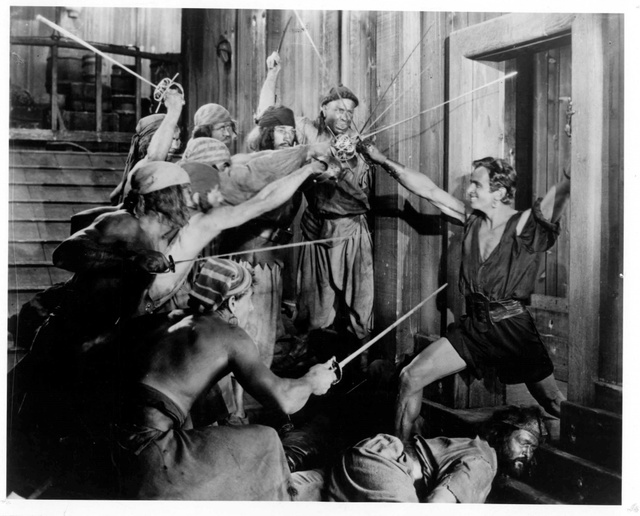
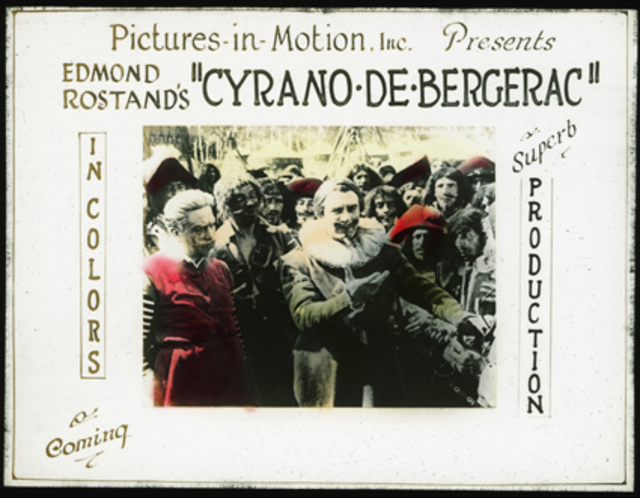
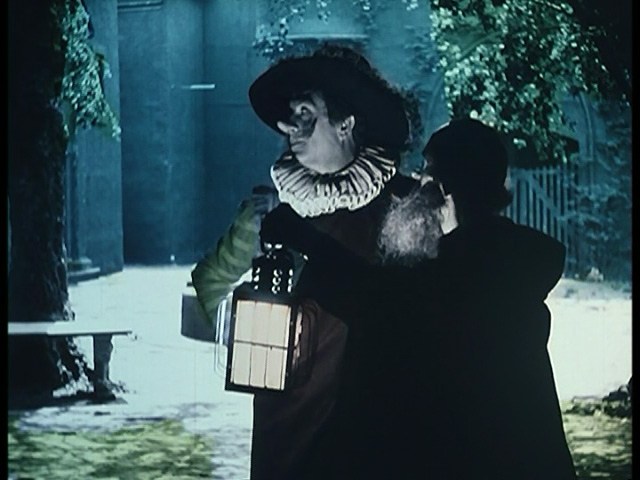
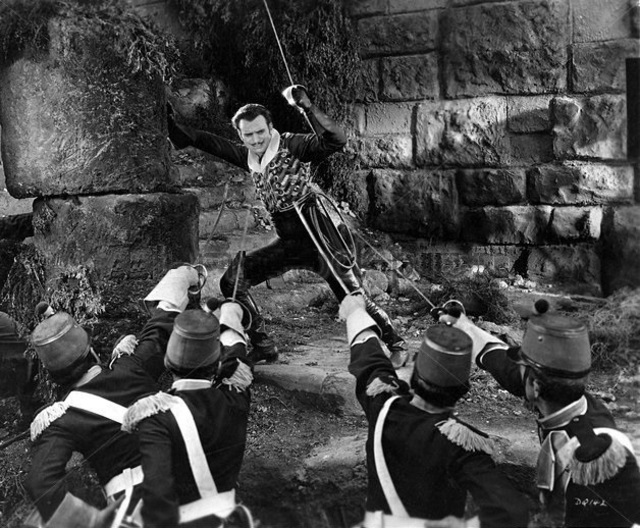
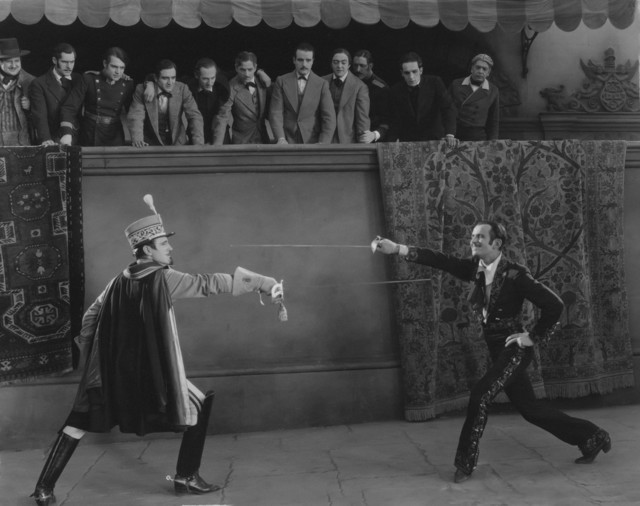
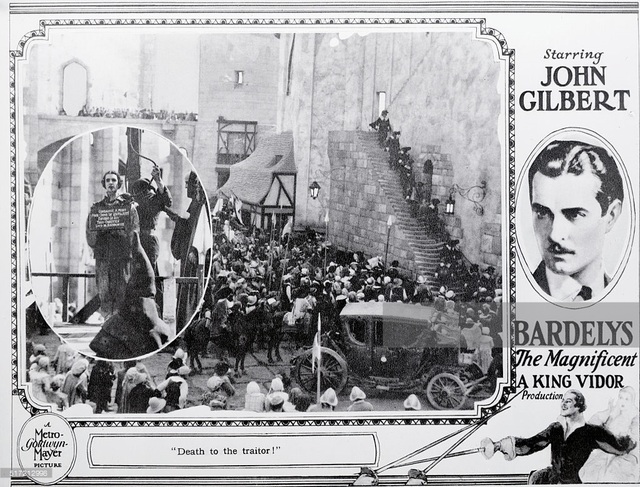
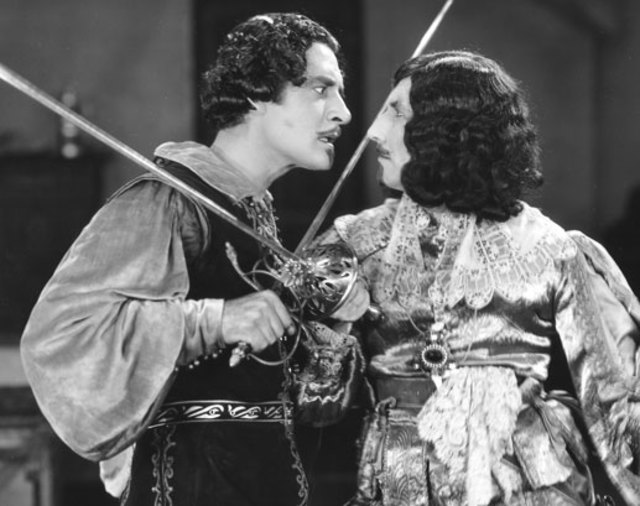
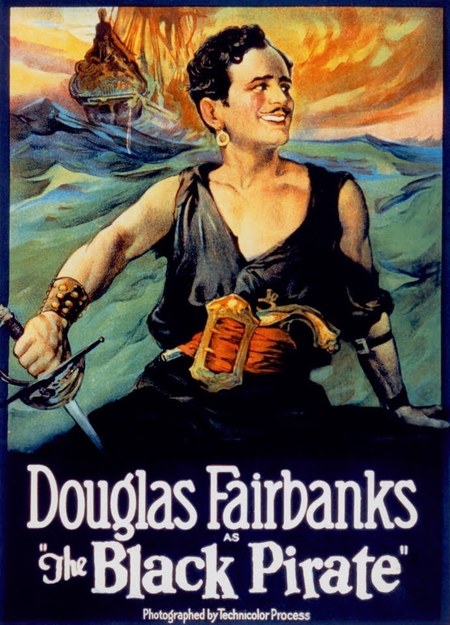
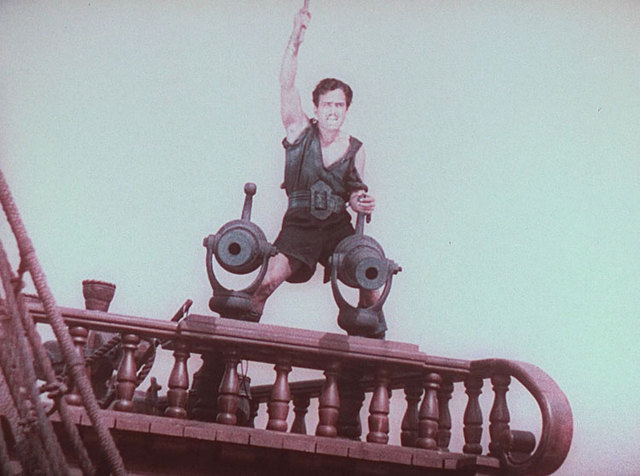
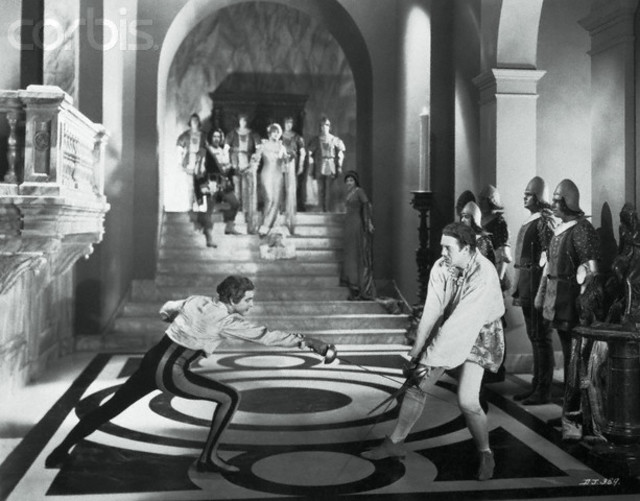
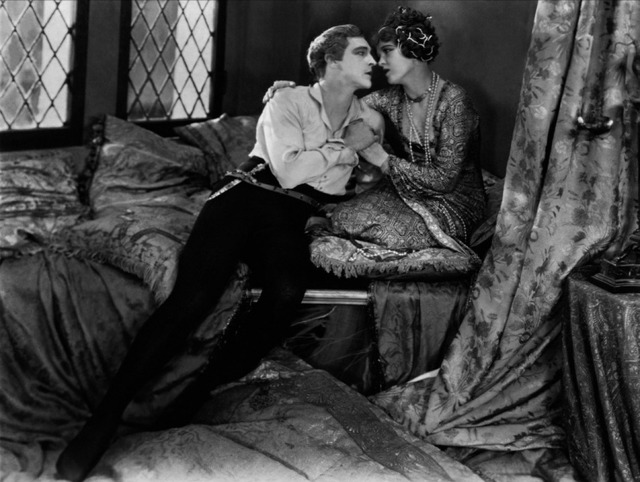
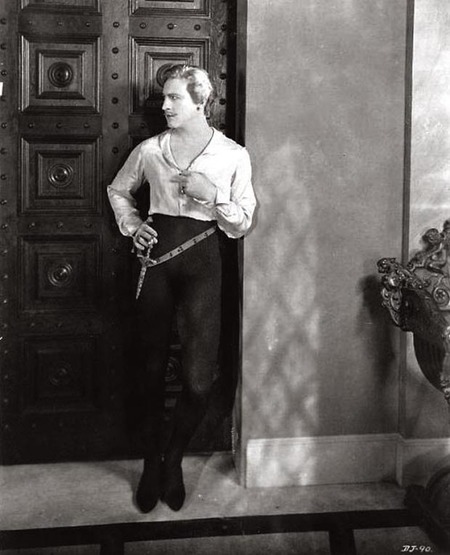
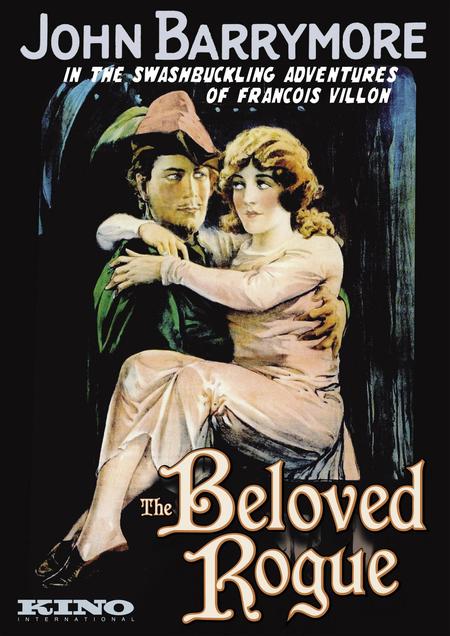
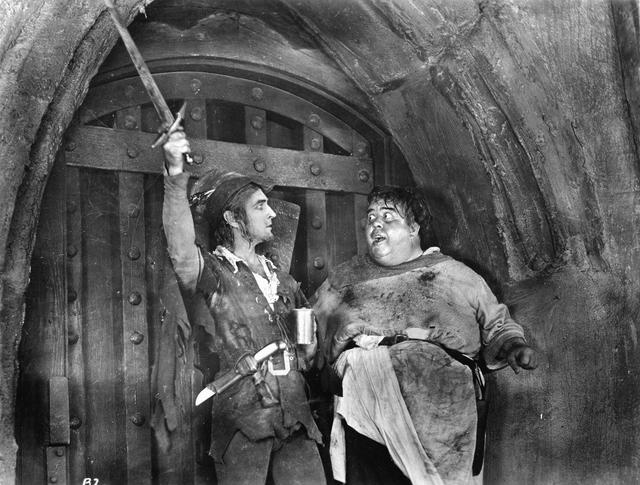
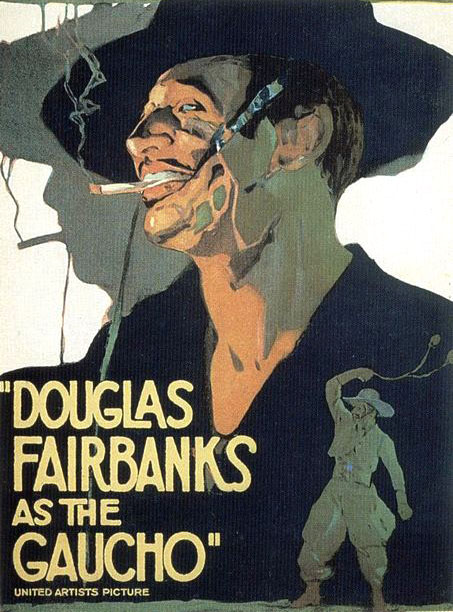
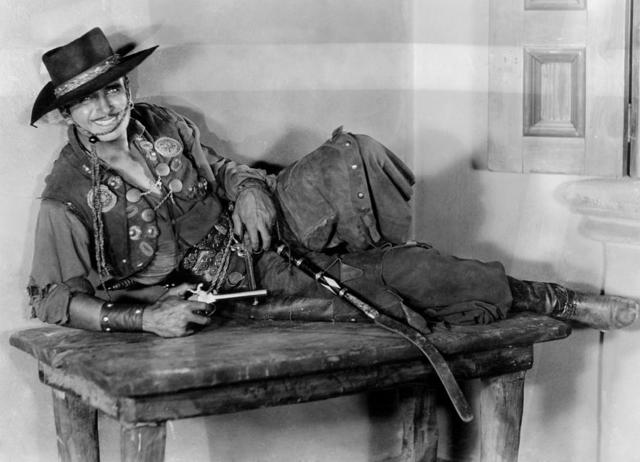
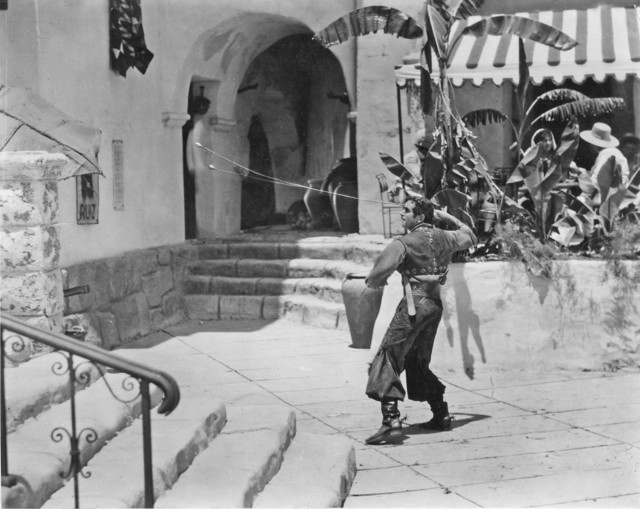
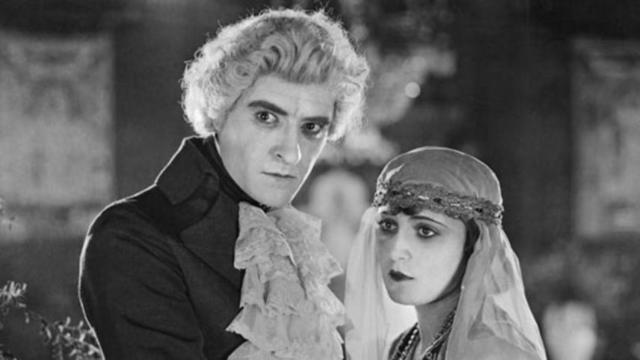
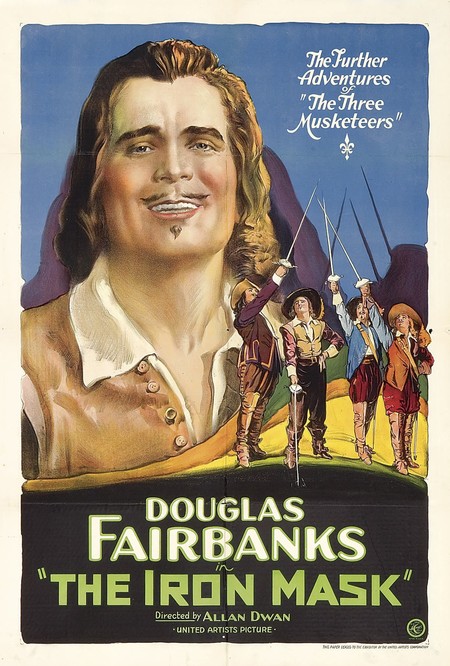
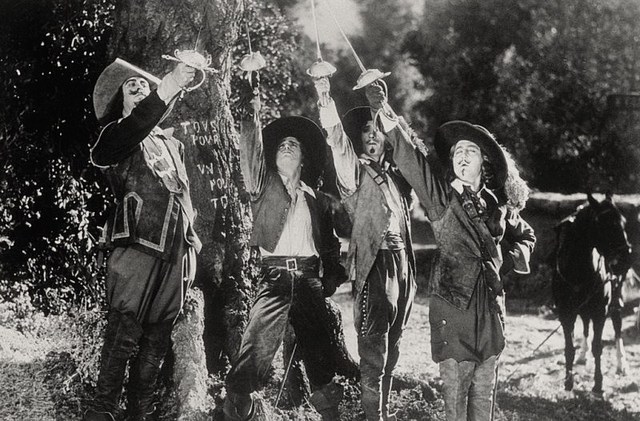
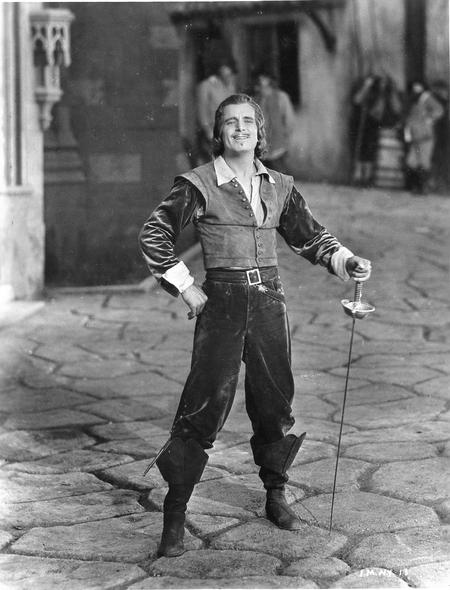
Yes, it’s the wrong article, but I just watched the 1922(?) Robin Hood with Douglas Fairbanks and have to admit I wasn’t impressed, especially when half way through the two hour movie, he was still somewhere in the Holy Land, not back in Sherwood Forest.
[…] See Part II of Silent Screen Swashbucklers here. […]